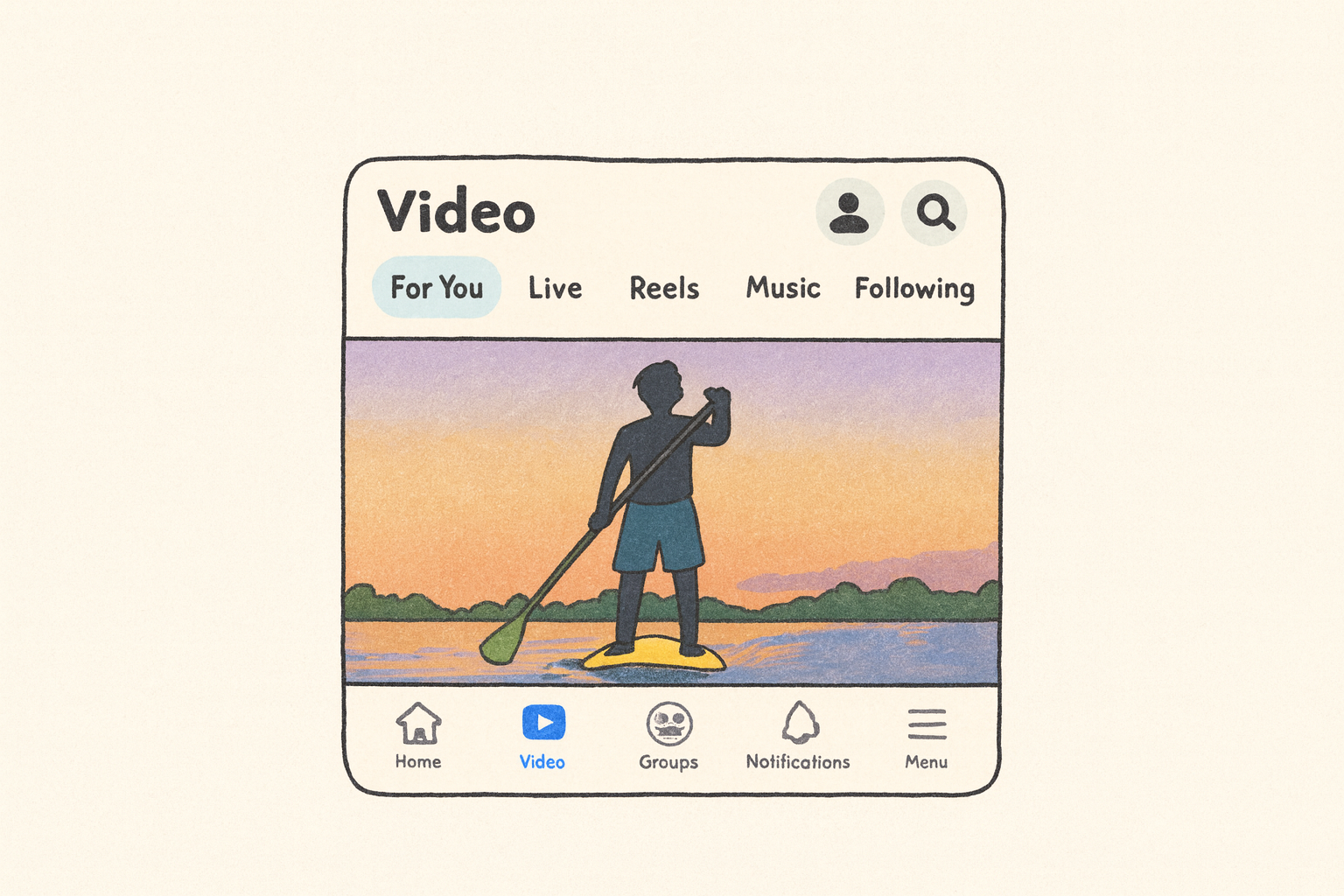All blogs · Written by Ajitesh
Google PM Interview: The Uber Car Seat Challenge

Google PM Interview: The Uber Car Seat Challenge
Welcome to the 14th edition of PM Interview Prep Weekly! I’m Ajitesh, and today we’re tackling a creative problem-solving case that tests your ability to think beyond the obvious solution.
The Context
Seven years ago, during my Google PM interviews, I was asked a deceptively simple question about Uber and car seats. What started as a straightforward problem quickly evolved into something entirely different.
The interviewer kept pushing. I’d come up with three solutions, and they’d say, “Okay, give me three more.” Then three more after that. I remember thinking, “Okay, I see what’s happening here.”
This wasn’t about coming up with fully baked, implementable solutions—that’s not even possible when you’re asked for your tenth idea in 20 minutes. I realized what they are simply testing my creative brainstorming skills.
So I leaned into it. I started throwing out ideas that were trivial, funny, borderline ridiculous—and that was completely fine. The goal wasn’t to build the most robust solution; it was to show I could keep generating new angles under pressure. Give them the creativity they’re asking for, even if it means proposing inflatable kangaroo pouches or shapeshifting seats.
Note: This case wasn’t hypothetical. In San Francisco, where I was interviewing in 2018, this was a real and pressing problem for parents. California law requires children under 8 to be secured in car seats—and unlike taxis, which are exempt, rideshare vehicles like Uber must comply. Parents were left with an impossible choice: bring their own bulky car seat everywhere or avoid ride-hailing services entirely. Uber had launched UberFAMILY (later rebranded as Uber Car Seat) in 2014 to address this, but availability was spotty and limited. For families in San Francisco trying to get around the city, this gap in service was a daily frustration. Perhaps my interviewer was a new parent and struggling with it as well!
The Case
Interviewer: “Parents are complaining about the experience of traveling with young kids on Uber. The main challenge is related to car seats. How would you improve this experience?”
The Interview Approach
Note: This framework is one approach, but feel free to take your own path in solving this problem.
1. Clarify Goals & Constraints (2-3 minutes)
- Ask about problem scope: What age range? (Infants vs. toddlers have different needs)
- Geographic scope? (Regulations differ by country/state)
- What does “bad experience” mean specifically?
- Set a clear goal (e.g., “improve satisfaction” or “increase ride frequency”)
- Understand timeline and resources
Important: Don’t anchor too quickly on car seats as the only problem. Ask about the broader pain points first.
2. Identify Customer Segments (3-5 minutes)
- Think beyond obvious users. Examples: single parents commuting, tourist families, emergency situations
- Pick ONE segment based on: frequency of trips, severity of pain, market size, willingness to pay
3. Define the Problem (5-7 minutes)
- Map your customer’s current journey and pain points
- Walk through the entire experience from pre-booking to post-ride
- Identify core problems that your solution needs to address
- Frame as “How might we…” statement
Common mistake to avoid: Don’t jump straight to “add a car seat tag” without understanding WHY parents are frustrated. The real problems might be trust issues, time waste, or inability to verify quality beforehand.
4. Design Solutions (7-10 minutes)
- Simple: Feature additions to existing product
- Medium: New service offerings or partnerships
- Complex: Platform or infrastructure changes
- Each solution should directly address your identified problem
5. Define MVP & Success (3-5 minutes)
- Core features only that address the #1 pain point
- Clear metrics tied to your goal (e.g., satisfaction scores, repeat usage)
- Consider implementation challenges and timeline
Here’s how I approached this case, focusing on a segment with high frequency and clear pain points.
I skipped the clarification question here because the question was pretty much clear and directly jumped into setting goals.
Goal Setting
- Improve parent satisfaction and increase ride frequency for families within 12 months.
Success means parents choose Uber over alternatives (personal car, other ride services) for trips with their children.
Customer Segmentation
Then I took some time to brainstorm customer segments. I had a couple of thoughts in mind. The first was demographic-based - maybe they’re single parents or partnered. The second was situation-based - maybe they’re temporarily visiting as tourists, or other life situations. The third was goal-based - like whether they’re going on a regular trip, emergency situations, or things like that. Based on that, I identified the following segments and walked the interviewer through:
- Single working parents - commuting to work with daycare drop-off
- Tourist families - visiting cities, need reliable kid-friendly transport
- Emergency situations - hospital visits, urgent travel with children
- Regular family outings - restaurants, events, weekend activities
I chose to focus on Single working parents because:
- High frequency: Daily commutes create recurring revenue
- Clear pain point: Time pressure makes reliability critical
Problem Deep Dive
For single working parents juggling work and childcare, I mapped their entire journey to identify pain points:
- Pre-booking: No visibility into which cars have car seats available. Parents can’t tell if kid-friendly options exist in their area.
- Booking: No dedicated option for families. Can’t request specific safety features or verify what they’ll get.
- Waiting: Constant anxiety about whether the car will actually have what’s needed. ETA uncertainty compounds the stress.
- Arrival: No way to verify beforehand if the car seat is properly installed, safe, or clean. Have to trust blindly or cancel.
- During ride: Worry throughout the ride about whether the setup is trustworthy. Can’t verify if the child is actually safe and comfortable.
- Post-ride: Limited feedback mechanisms to rate or review the car seat experience specifically.
From this journey mapping, I identified three core problems:
-
Time waste & ETA uncertainty: Booking a regular Uber only to have it arrive without a car seat means canceling and rebooking, adding 10-15 minutes of delay. For someone with a 9 AM meeting and 8:45 daycare drop-off, this is unacceptable.
-
Safety trust issues: Even when drivers claim to have car seats, parents can’t verify:
- Is it properly installed?
- Is it clean and well-maintained?
- Does it meet safety standards?
- Is it the right size for my child?
-
Lack of visibility & predictability: Parents need to know in advance whether kid-friendly cars are available in their area at their needed time. Current system offers no visibility until after booking.
I prioritized Time waste & ETA uncertainty because it’s the immediate blocker preventing adoption. Safety is crucial but becomes relevant only after solving the reliability problem.
How might we help single working parents get reliable, kid-friendly rides during their daily commute without wasting time on uncertainty?
Solution Design
- Kid-Friendly Tag & Verification System
- New “Kid-Friendly” tag visible pre-booking
- Filter to show only kid-friendly cars in area
- Uber Kids - Dedicated Service Tier
- Separate service category (like UberX, UberXL)
- Drivers must complete car seat safety certification
- Higher fare (15-20% premium) or a fixed charge
- Uber Kids Hotspot Program:
- Use analytics to identify high-demand areas/times (daycare zones, 7-9 AM)
- Incentivize kid-friendly drivers to be available in these hotspots
- Surge-like pricing but for guaranteed availability
(I came up with this term “Hotspot” because during my undergrad, I had proposed a similar “Hotspot” feature. The idea was to address a problem with stray dogs—the hotspot would be a designated place where you could get assistance or report stray dog issues.)
The interviewer told me that what I proposed as tags already sort of exists, and the second solution is basically what Uber had already launched as Uber Family with car seats. So in some way, these didn’t fully solve the problem. They asked if I could come up with more creative solutions.
In retrospect, I think I did a poor job at the initial part of the question. I could have asked more clarification questions to understand what had already been done and what I should instead be focusing on.
My next 3 solutions were:
- Transformable Seat Technology: Infra solution Partner with car manufacturers or aftermarket companies to develop seats that transform into certified car seats.
One-button conversion: adult seat → car seat.
- Car Seat Vending Machines: Similar to the bike sharing programs popular in SF, place car seat vending machines at high-traffic locations (malls, airports, transit hubs).
When requested at the time of booking, drivers can pick up on their way to the pickup location. This results in extra cost to users, and drivers have to return the seat within 24 hours.
- Mobility Car Seat Installer (similar to ambulance) They arrive 5 minutes before the driver, pre-install the car seat at an additional cost charged to the user.
He said this is good, but asked if I could come up with more solutions. My solutions were (I don’t exactly remember, but likely):
- Drone Delivery of Car Seats (in areas where it’s possible)
- Predictive Pre-Positioning: ML model predicts when/where kid-friendly rides will be needed. Pre-position certified drivers in these zones with pre-installed seats.
- Inflatable Kangaroo Pods (a union of Kangaroo Pouch + Airbag Technology): Surrounds child in protective cushion during ride and packs down to size of a shoe box when deflated. Needs approval from city regulators.
Then he said, “This is good. We can stop here. But if you want, I would love to hear more.” I ended up giving more ideas. I don’t exactly remember what they were, but here are some ideas I can think of now:
- 3D Printing Stations for car seats that are biodegradable
- Shapeshifting seats with programmable matter: It can change shape/firmness on command and morph into certified car seat configuration
- Airbnb for Car Seats: Parents lend their car seats to drivers in their neighborhood. Driver picks up from parent’s home, returns after shift
- ”Transforming Trunk”: Trunk converts into a rear-facing child seat pod …
Some of these were impractical or way out of bounds in terms of feasibility. But when you have to brainstorm under time pressure, you just have to push yourself. Some of the techniques I relied on in coming up with these solutions were:
- SCAMPER - A creativity technique that encourages replacing, moving, or combining ideas
- Biomimicry - Taking inspiration from biology (like the kangaroo pouch idea)
- Anchoring on emerging technologies - When you match any new trend (whether it’s AR, VR, or something else) with a particular problem, you can generate solution patterns. That’s what I was trying to do.
MVP and Success Metrics
I could never get to it because most of the time was spent in this brainstorming exercise, but for the completeness of this blog, let me walk you through what I think should have been the MVP and the metrics.
I would select Uber Kids as it seems feasible in the immediate term, addresses parents’ concerns, and has a clear revenue angle.
Success Metrics - aligned with goal of improving satisfaction
- Adoption Metrics: Available in 80% of zip codes during peak hours (7-9 AM, 4-6 PM)
- Engagement Metrics: 60% of users create recurring scheduled rides
- Engagement Metrics: 4.7+ star rating on car seat experience
Key Takeaways
-
Ask clarifying questions, but know you can recover: Ideally, ask about what already exists and what the real problem is upfront. But if you find out mid-interview that your solutions are already implemented (like I did with Uber Family), don’t freeze. The worst response is to get stuck or ignore the new information. Instead, pivot and incorporate it into your thinking. I asked for a couple of minutes, then came up with more creative solutions that addressed the gap.
-
Go deeper on customer segments, even when they seem narrow: The segment might appear well-defined (like “parents”), but you need to segment further. Single working parents have very different needs than tourist families or parents in emergency situations. Dig into demographics, life situations, and goals to find the right focus. Then map their entire journey to understand where the real pain points are—it might not be where you initially think.
-
Practice brainstorming—it’s a core PM skill: Being able to generate creative solutions under pressure is valuable for product management beyond interviews. Practice techniques like SCAMPER (replacing, combining, rearranging ideas), biomimicry (drawing from biology), and anchoring on emerging technologies.
Practice This Case
Want to try this case yourself with an AI interviewer that adapts to your answers?
Practice here: Tough Tongue AI - Uber Car Seat Case
The AI interviewer will push you on:
- Why your chosen segment over others
- How you’d handle driver incentives and adoption
- What happens when solutions are already implemented (like Uber Family)
Further Reading
Want more frameworks for tackling product design questions? Check out these resources:
- A Simpler Approach to Product Management Case Interviews - The framework that works across any design case
- Google Smell Teleportation Case - Another creative brainstorming example with full walkthrough
- Complete PM Interview Collection - Practice 50+ different product design cases
What creative solution would YOU propose for this case? Hit reply—I’d love to hear your take.
About PM Interview Prep Weekly
Every Monday, get one complete PM case study with detailed solution walkthrough, an AI interview partner to practice with, and insights on what’s new in PM interviewing.
No fluff. No outdated advice. Just practical prep that works.
— Ajitesh
CEO & Co-founder, Tough Tongue AI
Ex-Google PM (Gemini)
LinkedIn | Twitter



